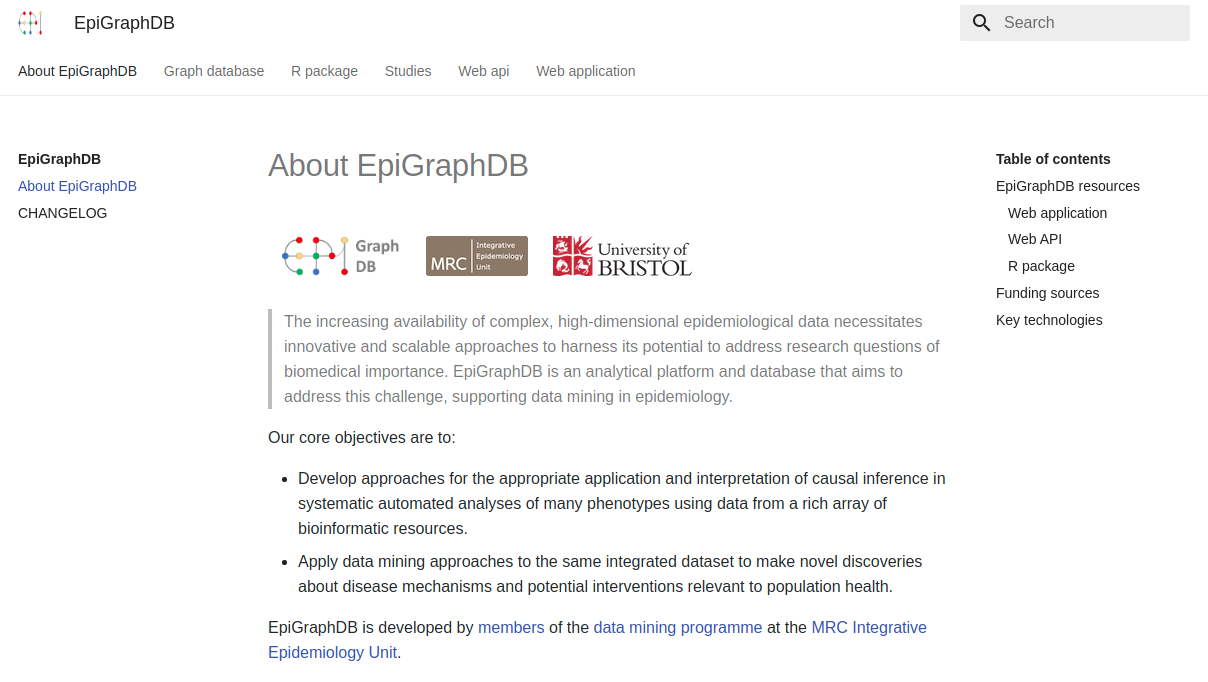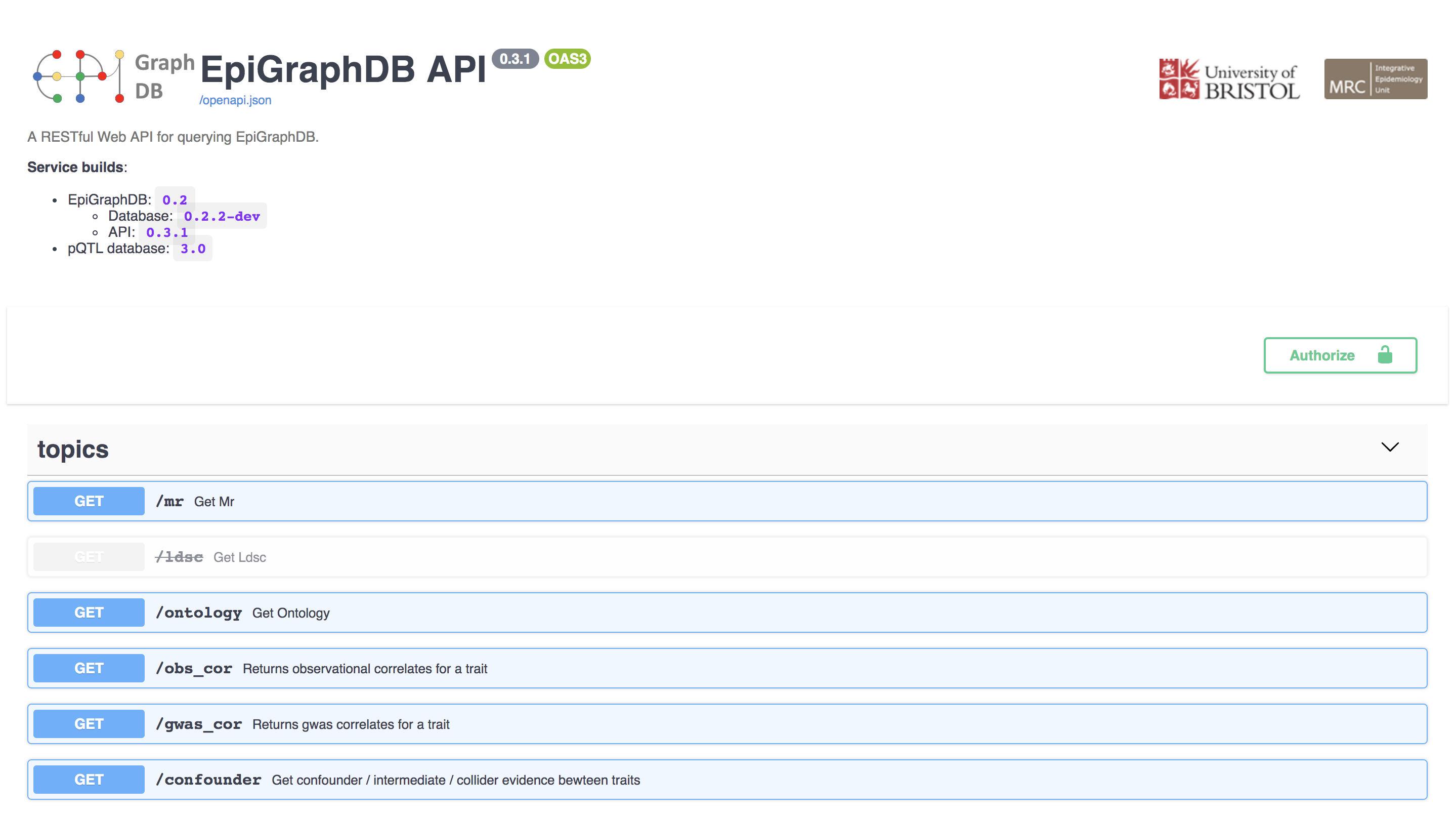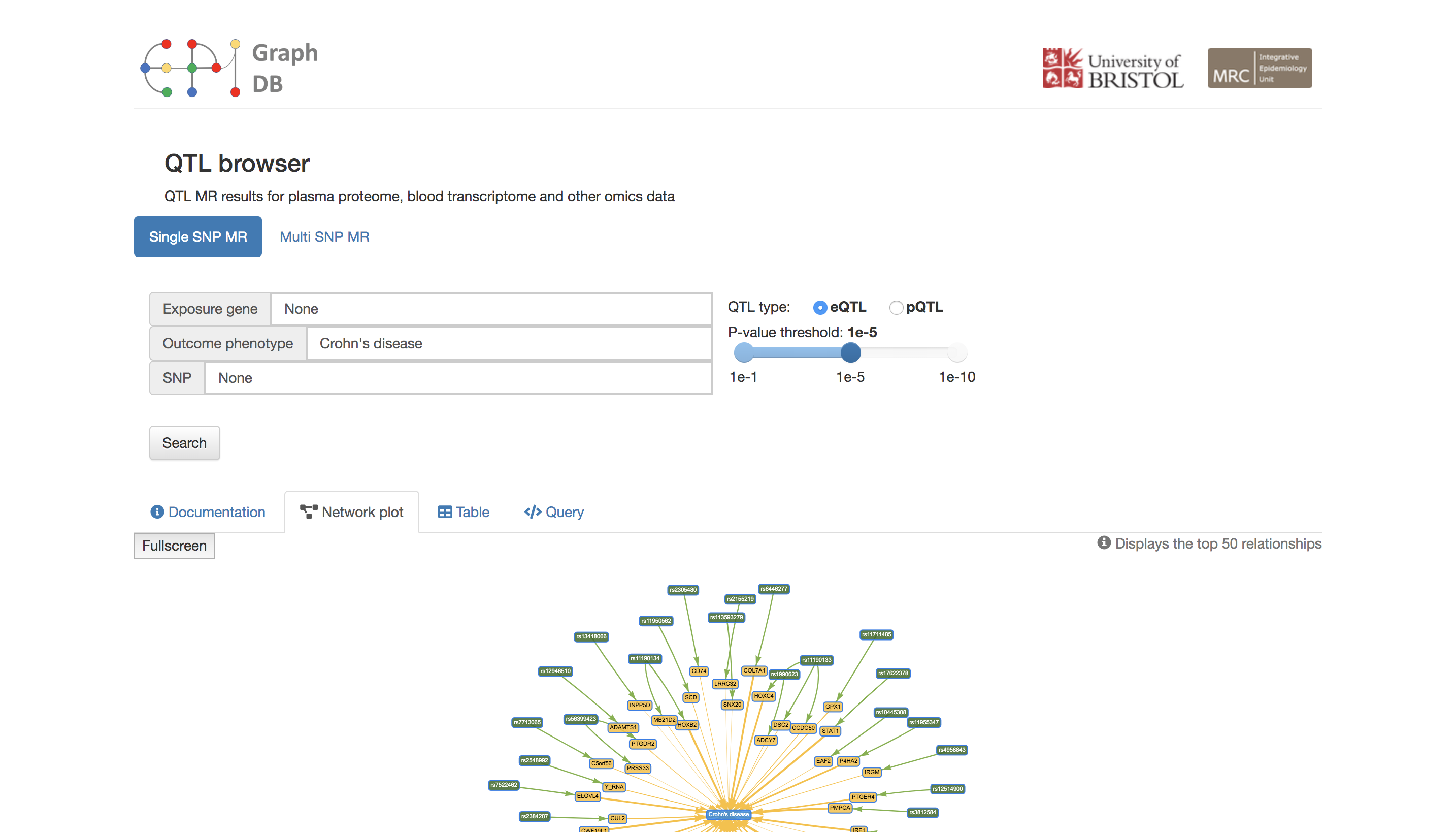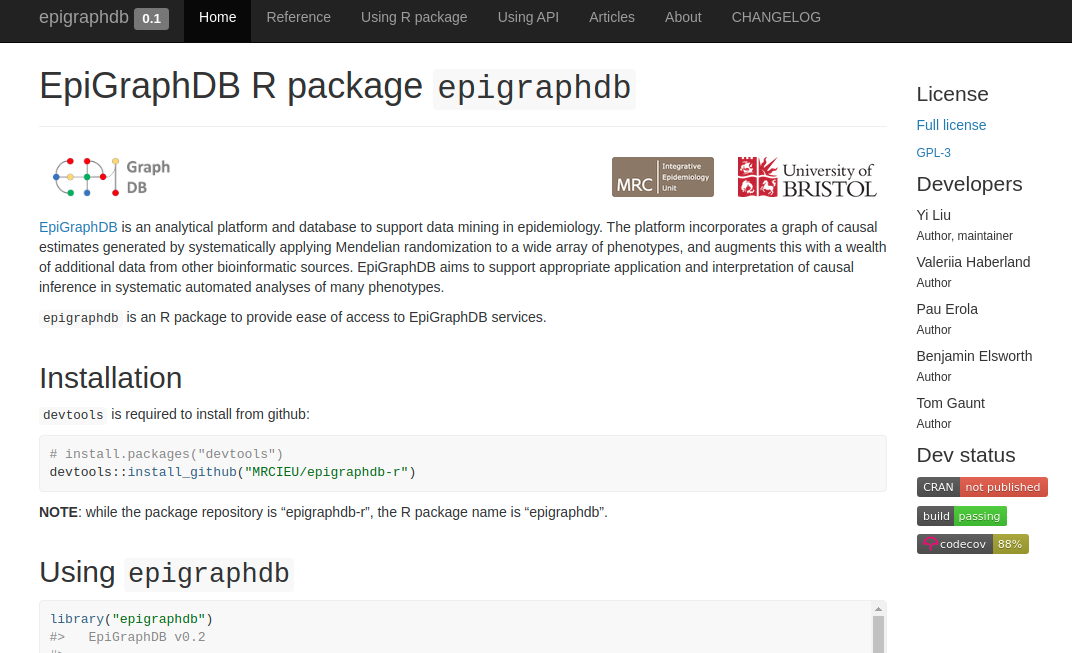EpiGraphDB is an analytical platform and database to support data mining in epidemiology. The platform incorporates a graph of causal estimates generated by systematically applying Mendelian randomization to a wide array of phenotypes, and augments this with a wealth of additional data from other bioinformatic sources. EpiGraphDB aims to support appropriate application and interpretation of causal inference in systematic automated analyses of many phenotypes.
epigraphdb is an R package to provide ease of access to EpiGraphDB services. We will refer to epigraphdb as the name of the R package whereas "EpiGraphDB" as the overall platform.
Installation
To install the latest development version from github ( devtools is required ):
# install.packages("devtools")
devtools::install_github("MRCIEU/epigraphdb-r")To install a stable version from CRAN:
install.packages("epigraphdb")NOTE: while the package repository is “epigraphdb-r”, the R package name is “epigraphdb”.
Using epigraphdb
epigraphdb provides a simple and intuitive way to query the API, as:
library("epigraphdb")
#>
#> EpiGraphDB v1.0 (API: https://api.epigraphdb.org)
#>
mr(outcome_trait = "Body mass index")
#> # A tibble: 370 x 12
#> exposure_id exposure_name outcome_id outcome_name estimate se
#> <chr> <chr> <chr> <chr> <dbl> <dbl>
#> 1 627 Epiandroster… 785 Body mass i… 0.0950 2.28e-3
#> 2 541 X-11787 835 Body mass i… -0.0578 1.77e-4
#> 3 971 Ulcerative c… 835 Body mass i… -0.0111 1.76e-4
#> 4 60 Waist circum… 835 Body mass i… 0.861 2.07e-2
#> 5 UKB-a:426 Eye problems… 94 Body mass i… -1.12 1.90e-2
#> 6 UKB-a:373 Ever depress… 95 Body mass i… -0.616 4.80e-4
#> 7 29 Birth length 95 Body mass i… -0.141 5.67e-4
#> 8 350 Laurate (12:… 974 Body mass i… 0.418 7.10e-3
#> 9 UKB-a:124 Treatment/me… 974 Body mass i… -5.14 1.08e-1
#> 10 95 Body mass in… 974 Body mass i… 0.981 2.79e-2
#> # … with 360 more rows, and 6 more variables: p <dbl>, ci_upp <dbl>,
#> # ci_low <dbl>, selection <chr>, method <chr>, moescore <dbl>)For more information on how to use the epigraphdb R package and how to use the API in R please check out the following articles:
Package functionalities
Users can use the general query function query_epigraphdb to get data from an API endpoint on EpiGraphDB without having to deal with HTTP requests by themselves. We also provide a list of functions (see the table below) that are equivalent to the upstream endpoints for the ease of use.
Contributing
If you would like to contribute to this package, please check out documentation on setting up development and currently planned updates.
EpiGraphDB resources
| link | screenshot |
|---|---|
| docs |  |
| API |  |
| web application |  |
| r package |  |
Citation
Please cite EpiGraphDB as
Yi Liu, Benjamin Elsworth, Pau Erola, Valeriia Haberland, Gibran Hemani, Matt Lyon, Jie Zheng, Oliver Lloyd, Marina Vabistsevits, Tom R Gaunt, EpiGraphDB: a database and data mining platform for health data science, Bioinformatics, btaa961, https://doi.org/10.1093/bioinformatics/btaa961
@article{epigraphdb2020bioinformatics,
author = {Liu, Yi and Elsworth, Benjamin and Erola, Pau and Haberland, Valeriia and Hemani, Gibran and Lyon, Matt and Zheng, Jie and Lloyd, Oliver and Vabistsevits, Marina and Gaunt, Tom R},
title = {{EpiGraphDB}: a database and data mining platform for health data science},
journal = {Bioinformatics},
year = {2020},
month = {11},
issn = {1367-4803},
doi = {10.1093/bioinformatics/btaa961},
url = {https://doi.org/10.1093/bioinformatics/btaa961},
note = {btaa961},
eprint = {https://academic.oup.com/bioinformatics/advance-article-pdf/doi/10.1093/bioinformatics/btaa961/34178613/btaa961.pdf}
}